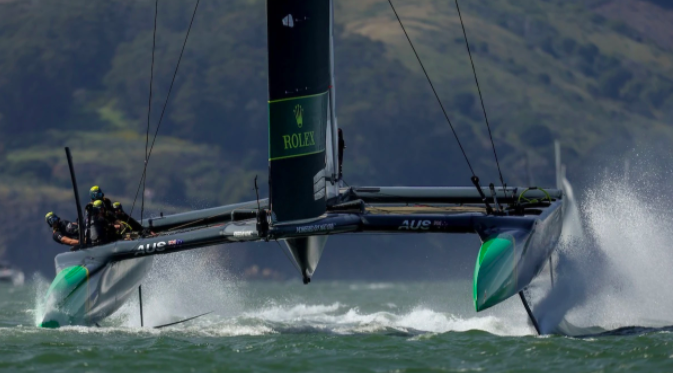While the electrification of cars is moving at a fast pace, passenger ferries continue to be almost exclusively powered by fossil fuels. That’s because the current battery capacity isn’t enough to juice these large ships for longer distances.
Scientists at the Chalmers University of Technology in Sweden and the SSPA marine research facility have found a way to bypass this problem — using hydrofoils.
Hydrofoils aren’t a novel idea, and they’re commonly used by sail boats. They are mounted under the hull and are nowadays made from carbon fiber. Serving a similar function to wings on an aircraft, hydrofoils lift the boats’ hull above the water’s surface, allowing them to travel at high speeds with low water resistance.

Now, the research team wants to apply hydrofoil technology on larger passenger vessels, which would bring major environmental benefits.
To realize that, they developed a measurement technique, which enabled them to understand how hydrofoils behave on water when their position changes, or the load and speed increases.
Using the data collected from the experiments, the team created a unique method that can simulate and predict how the hydrofoil would behave under a variety of conditions.
“You want the foil to be as efficient as possible, which means carrying as much weight as possible at as low a speed as possible with the least resistance. Our next goal is to use this method when designing more efficient hydrofoils for ferries in the future,” said research leader Arash Eslamdoost to Science Directly.
The researchers claim that their method will boost the development of new hydrofoil designs that can reduce water resistance by up to 80%, which would, in turn, significantly increase the range of battery-powered ships.
Even fossil-fuel-powered vessels could benefit from it, as the reduced water resistance could bring down fuel consumption by 80%.
The team believes that their method is paving the way for the use of hydrofoils in larger passenger ships, allowing them to travel in a safe, controlled, and greener way.
If you’re interested in the full research, you can find it here.
Get the TNW newsletter
Get the most important tech news in your inbox each week.






